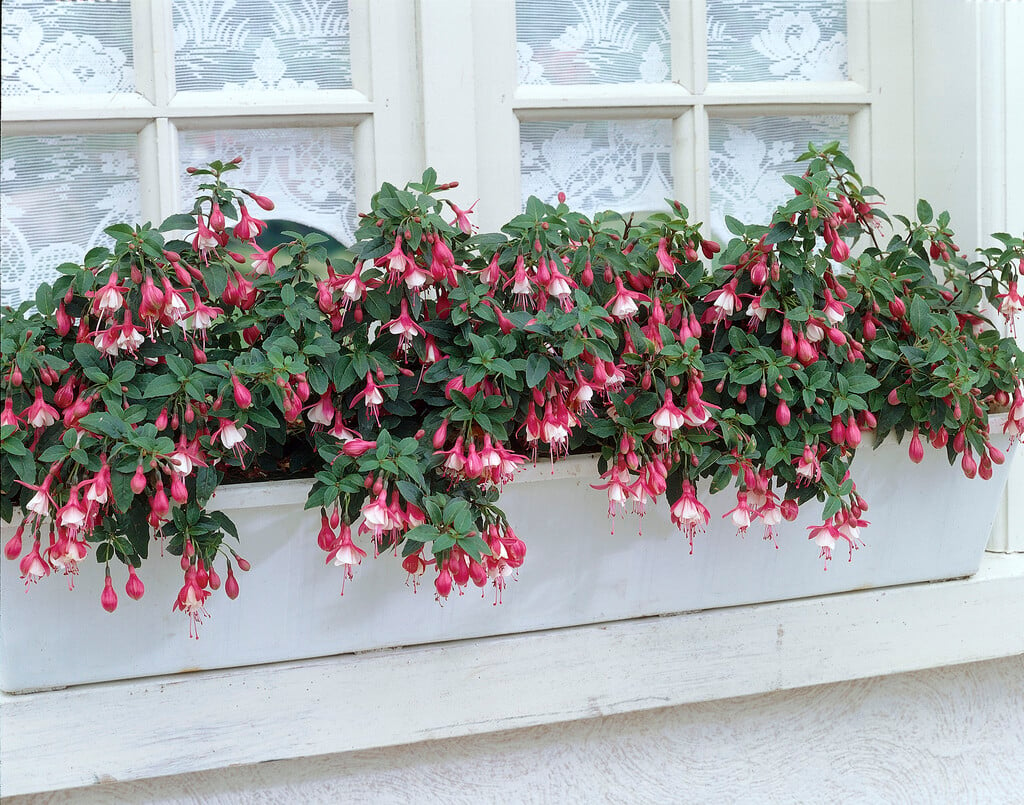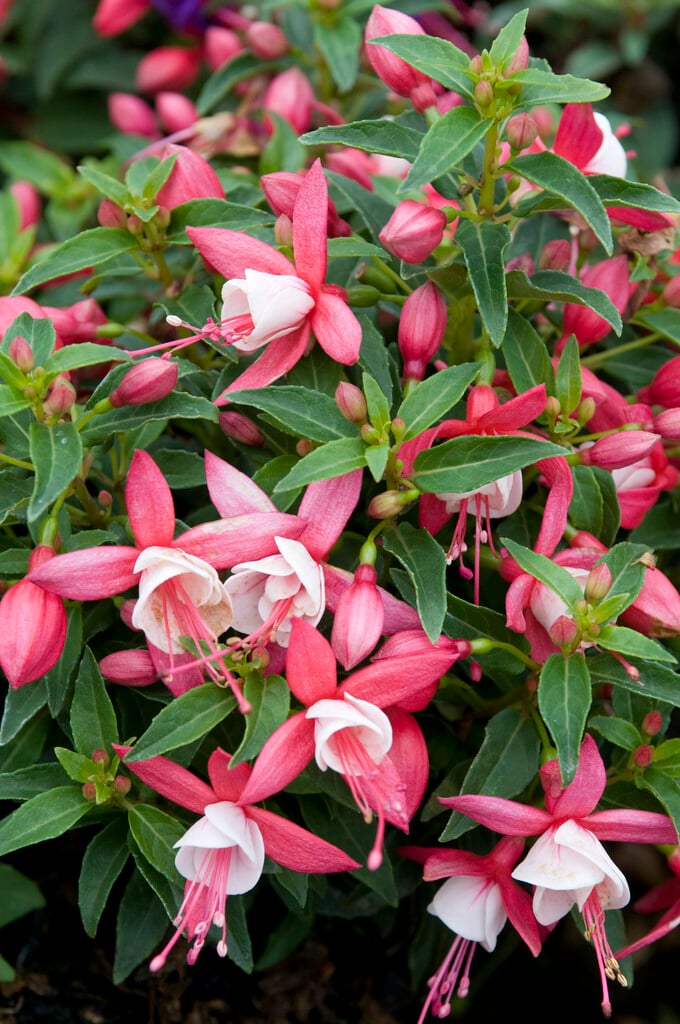Fuchsia 'Lady Thumb' (d)
fuchsia 'Lady Thumb'
A compact and free-flowering, bushy, dwarf deciduous shrub to 30cm tall with dark green leaves. Small, semi-double flowers, with carmine-pink tube and sepals and pink-veined white petals are borne from summer to autumn
Size
Ultimate height
0.1–0.5 metresTime to ultimate height
2–5 yearsUltimate spread
0.1–0.5 metresGrowing conditions
Moisture
Moist but well–drained, Well–drainedpH
Acid, Alkaline, NeutralColour & scent
| Stem | Flower | Foliage | Fruit | |
| Spring | Green | |||
|---|---|---|---|---|
| Summer | Pink White | Green | ||
| Autumn | Pink White | Green | ||
| Winter |
Position
- Full sun
- Partial shade
Aspect
South–facing or West–facing or East–facing
Exposure
Sheltered Hardiness
H3Botanical details
- Family
- Onagraceae
- Native to GB / Ireland
- No
- Foliage
- Deciduous
- Habit
- Bushy
- Potentially harmful
- Although Fuchsia berries are edible, most are not particularly tasty and are sparsely produced on plants. Fuchsia plants are generally grown as an ornamental and not for fruit crops within the UK
- Genus
Fuchsia can be deciduous or evergreen shrubs or trees, rarely perennials, with opposite or whorled leaves and usually pendent flowers with conspicuous tubular calyx, 4 spreading sepals and 4 erect petals
- Name status
Accepted
How to grow
Cultivation
Grow in moist but well-drained, fertile soil in sun or part shade. Hardy outside in most UK regions. Plant the base of the stem 5cm below the soil surface, provide a deep winter mulch and shelter from cold drying winds. See hardy fuchsia cultivation for further information
Propagation
Propagate by softwood or semi-hardwood cuttings
Suggested planting locations and garden types
- City and courtyard gardens
- Coastal
- Cottage and informal garden
- Patio and container plants
- Flower borders and beds
- Garden edging
Pruning
Pests
May be susceptible to aphids, capsid bug, fuchsia gall mite, fuchsia flea beetle, glasshouse red spider mite and vine weevil
Diseases
May be susceptible to fuchsia rust, grey moulds and honey fungus (rarely)
Love gardening
Sign up to receive regular gardening tips, inspiration, offers and more
View our Privacy Policy
Get involved
The Royal Horticultural Society is the UK’s leading gardening charity. We aim to enrich everyone’s life through plants, and make the UK a greener and more beautiful place.

